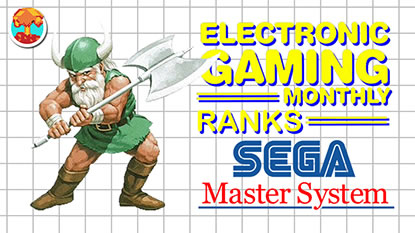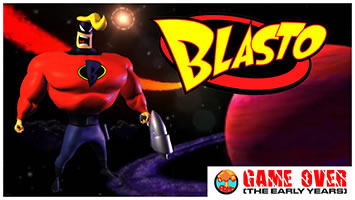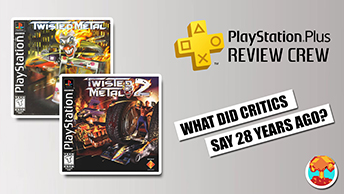- CLASSIC MAGAZINES
- REVIEW CREW
A show recapping what critics thought back
when classic games first came out! - NEXT GENERATION'S BEST & WORST
From the worst 1-star reviews to the best
5-stars can offer, this is Next Generation! - NINTENDO POWER (ARCHIVE)
Experience a variety of shows looking at the
often baffling history of Nintendo Power! - MAGAZINE RETROSPECTIVE
We're looking at the absolutely true history of
some of the most iconic game magazines ever! - SUPER PLAY'S TOP 600
The longest and most ambitious Super NES
countdown on the internet! - THEY SAID WHAT?
Debunking predictions and gossip found
in classic video game magazines! - NEXT GENERATION UNCOVERED
Cyril is back in this spin-off series, featuring the
cover critic review the art of Next Generation! - HARDCORE GAMER MAGAZING (PDF ISSUES)
Download all 36 issues of Hardcore Gamer
Magazine and relive the fun in PDF form!
- REVIEW CREW
- ELECTRONIC GAMING MONTHLY
- ELECTRONIC GAMING MONTHLY RANKS
From Mario to Sonic to Street Fighter, EGM
ranks classic game franchises and consoles! - ELECTRONIC GAMING MONTHLY BEST & WORST
Counting down EGM’s best and worst reviews
going year by year, from 1989 – 2009! - ELECTRONIC GAMING BEST & WORST AWARDS
11-part video series chronicling the ups and
downs of EGM’s Best & Worst Awards!
- ELECTRONIC GAMING MONTHLY RANKS
- GAME HISTORY
- GAME OVER: STORY BREAKDOWNS
Long-running series breaking down game
stories and analyzing their endings! - A BRIEF HISTORY OF GAMING w/ [NAME HERE]
Real history presented in a fun and pithy
format from a variety of game historians! - THE BLACK SHEEP
A series looking back at the black sheep
entries in popular game franchises! - INSTANT EXPERT
Everything you could possibly want to know
about a wide variety of gaming topics! - FREEZE FRAME
When something familiar happens in the games
industry, we're there to take a picture! - I'VE GOT YOUR NUMBER
Learn real video game history through a series
of number-themed episodes, starting at zero! - GREAT MOMENTS IN BAD ACTING
A joyous celebration of some of gaming's
absolute worst voice acting!
- GAME OVER: STORY BREAKDOWNS
- POPULAR SHOWS
- DG NEWS w/ LORNE RISELEY
Newsman Lorne Riseley hosts a regular
series looking at the hottest gaming news! - REVIEW REWIND
Cyril replays a game he reviewed 10+ years
ago to see if he got it right or wrong! - ON-RUNNING FEUDS
Defunct Games' longest-running show, with
editorials, observations and other fun oddities! - DEFUNCT GAMES QUIZ (ARCHIVE)
From online quizzes to game shows, we're
putting your video game knowledge to the test!- QUIZ: ONLINE PASS
Take a weekly quiz to see how well you know
the news and current gaming events! - QUIZ: KNOW THE GAME
One-on-one quiz show where contestants
find out if they actually know classic games! - QUIZ: THE LEADERBOARD
Can you guess the game based on the classic
review? Find out with The Leaderboard!
- QUIZ: ONLINE PASS
- DEFUNCT GAMES VS.
Cyril and the Defunct Games staff isn't afraid
to choose their favorite games and more! - CYRIL READS WORLDS OF POWER
Defunct Games recreates classic game
novelizations through the audio book format!
- DG NEWS w/ LORNE RISELEY
- COMEDY
- GAME EXPECTANCY
How long will your favorite hero live? We crunch
the numbers in this series about dying! - VIDEO GAME ADVICE
Famous game characters answer real personal
advice questions with a humorous slant! - FAKE GAMES: GUERILLA SCRAPBOOK
A long-running series about fake games and
the people who love them (covers included)! - WORST GAME EVER
A contest that attempts to create the worst
video game ever made, complete with covers! - LEVEL 1 STORIES
Literature based on the first stages of some
of your favorite classic video games! - THE COVER CRITIC
One of Defunct Games' earliest shows, Cover
Critic digs up some of the worst box art ever! - COMMERCIAL BREAK
Take a trip through some of the best and
worst video game advertisements of all time! - COMIC BOOK MODS
You've never seen comics like this before.
A curious mix of rewritten video game comics!
- GAME EXPECTANCY
- SERIES ARCHIVE
- NINTENDO SWITCH ONLINE ARCHIVE
A regularly-updated list of every Nintendo
Switch Online release, plus links to review! - PLAYSTATION PLUS CLASSIC ARCHIVE
A comprehensive list of every PlayStation
Plus classic release, including links! - RETRO-BIT PUBLISHING ARCHIVE
A regularly-updated list of every Retro-Bit
game released! - REVIEW MARATHONS w/ ADAM WALLACE
Join critic Adam Wallace as he takes us on a
classic review marathon with different themes!- DEFUNCT GAMES GOLF CLUB
Adam Wallace takes to the links to slice his way
through 72 classic golf game reviews! - 007 IN PIXELS
Adam Wallace takes on the world's greatest spy
as he reviews 15 weeks of James Bond games! - A SALUTE TO VAMPIRES
Adam Wallace is sinking his teeth into a series
covering Castlevania, BloodRayne and more! - CAPCOM'S CURSE
Adam Wallace is celebrating 13 days of Halloween
with a line-up of Capcom's scariest games! - THE FALL OF SUPERMAN
Adam Wallace is a man of steel for playing
some of the absolute worst Superman games! - THE 31 GAMES OF HALLOWEEN
Adam Wallace spends every day of October afraid
as he reviews some of the scariest games ever! - 12 WEEKS OF STAR TREK
Adam Wallace boldly goes where no critic has
gone before in this Star Trek marathon!
- DEFUNCT GAMES GOLF CLUB
- DAYS OF CHRISTMAS (ARCHIVE)
Annual holiday series with themed-episodes
that date all the way back to 2001!- 2015: 30 Ridiculous Retro Rumors
- 2014: 29 Magazines of Christmas
- 2013: 29 Questionable Power-Ups of Christmas
- 2012: 34 Theme Songs of Christmas
- 2011: 32 Game Endings of Christmas
- 2010: 31 Bonus Levels of Christmas
- 2009: 30 Genres of Christmas
- 2008: 29 Controls of Christmas
- 2007: 34 Cliches of Christmas
- 2006: 33 Consoles of Christmas
- 2005: 32 Articles of Christmas
- 2004: 31 Websites of Christmas
- 2003: 29 Issues of Christmas
- 2002: 28 Years of Christmas
- 2001: 33 Days of Christmas
- NINTENDO SWITCH ONLINE ARCHIVE
- REVIEW ARCHIVE
- FULL ARCHIVE
Electronic Gaming Monthly's Top 10 Game Systems of 1991
1991 was a great year to be a gamer. We saw Street Fighter II become a surprise success at the arcade, single-handedly birthing an entire genre of competitive fighting games; the Genesis introduced 16-bit gamers to Sonic the Hedgehog, ToeJam & Earl and the entire cast of Streets of Rage; and, most importantly, the Super NES launched in North America, signaling the official start of one of the greatest system wars of all time. No matter what kind of games you were after, there was a system right for you. But which console reigned supreme? In order to answer that burning question, I decided to flip through the pages of Electronic Gaming Monthly's 1992 Video Game Buyer's Guide, where Steve, Ed and the rest of the Review Crew rated all of 1991's hottest consoles. Join me as I parachute into the front lines of the system war and count down Electronic Gaming Monthly's Top 10 Game Systems of 1991.
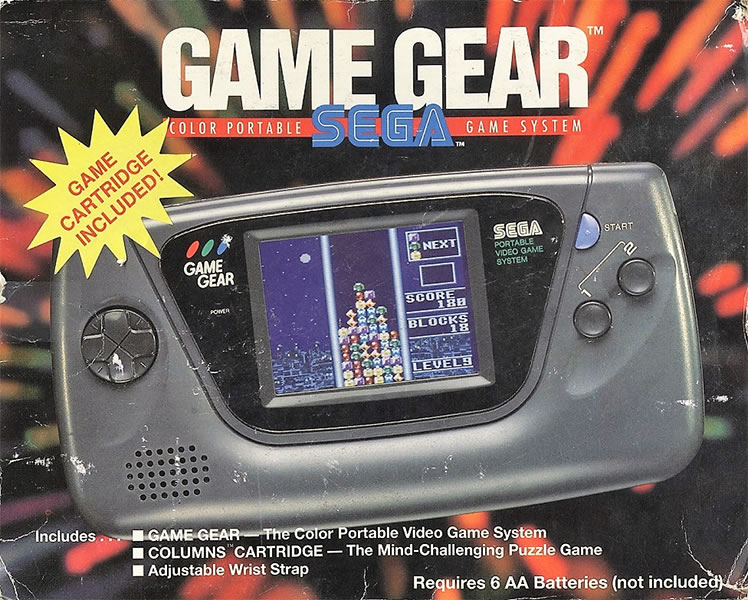
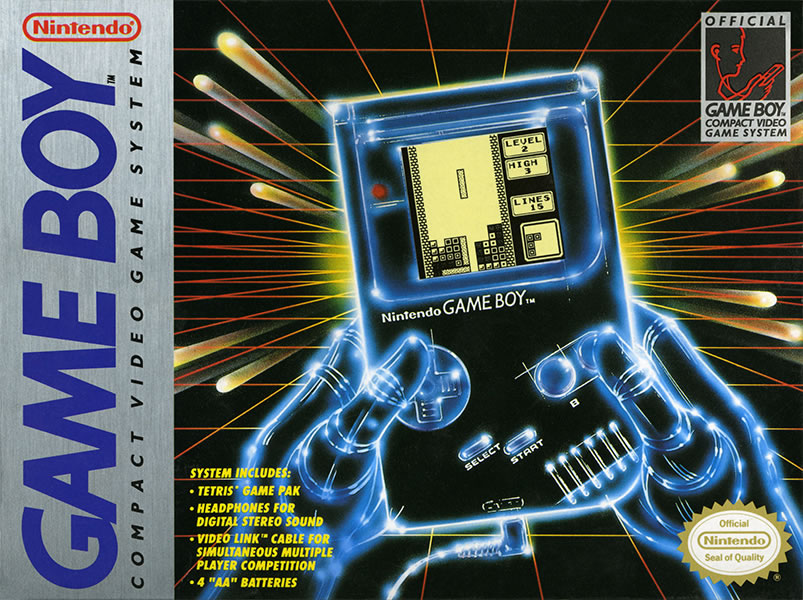
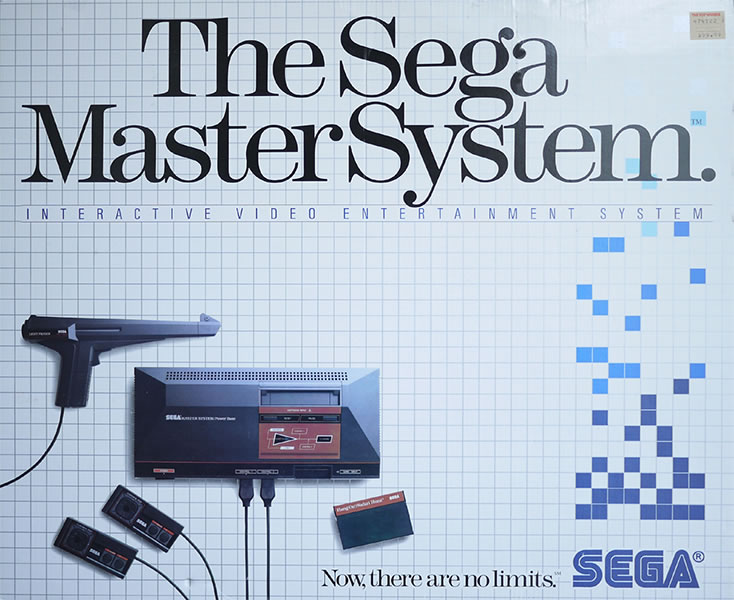
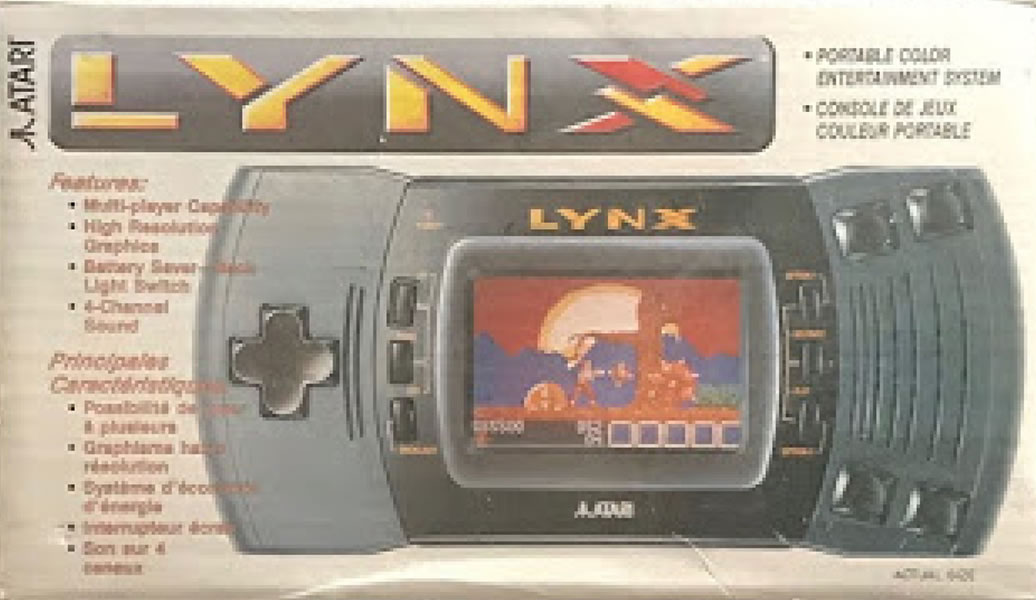
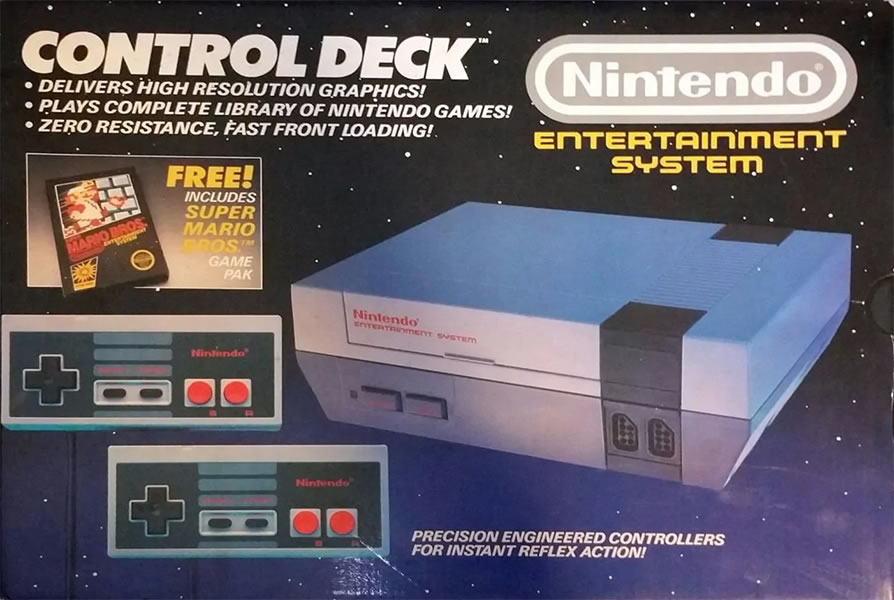
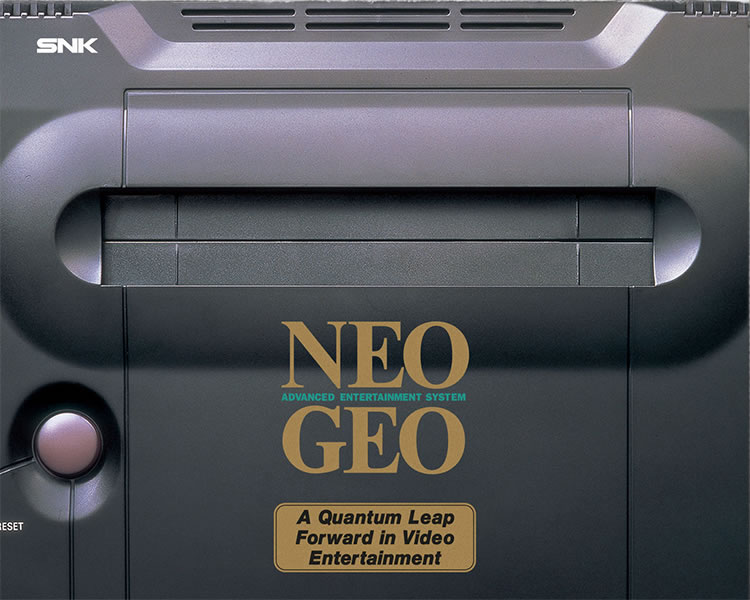
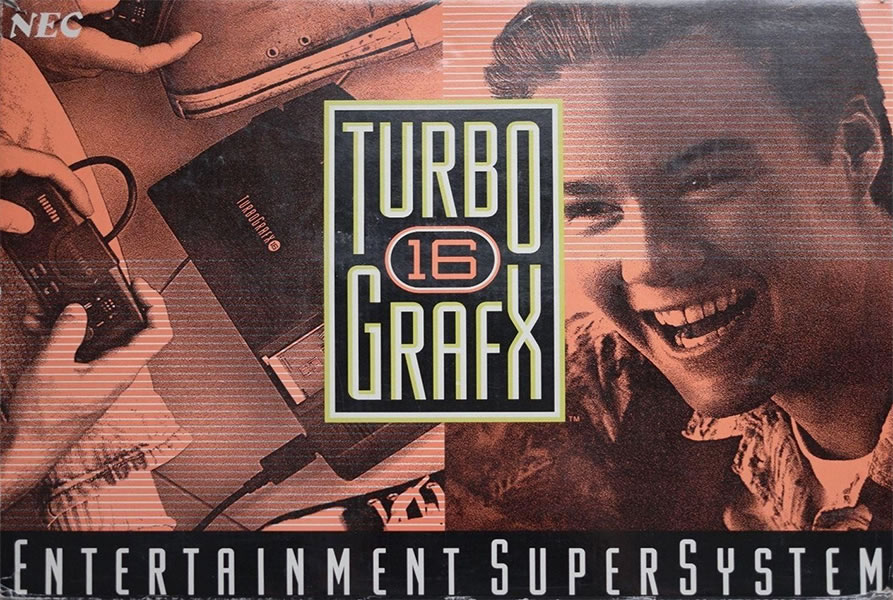
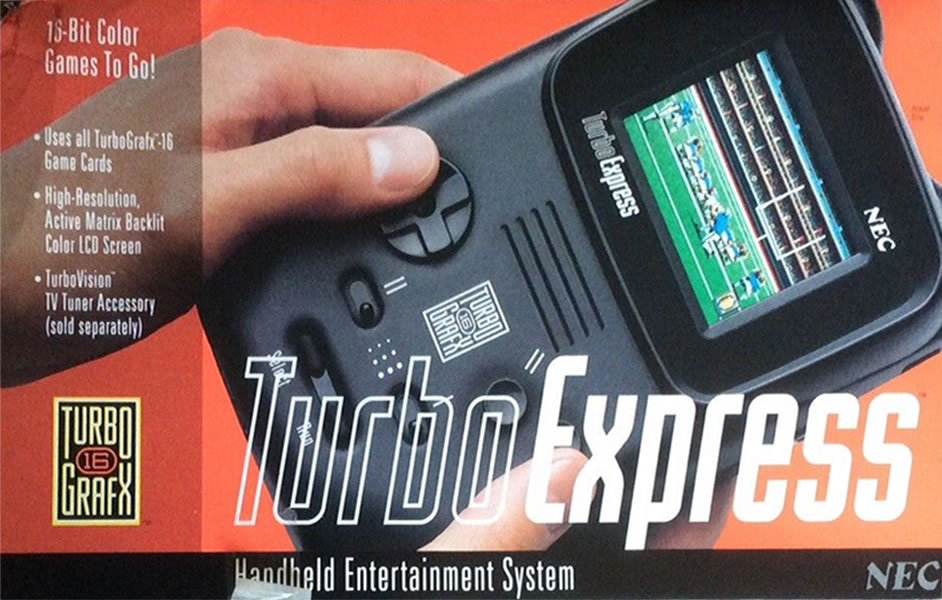
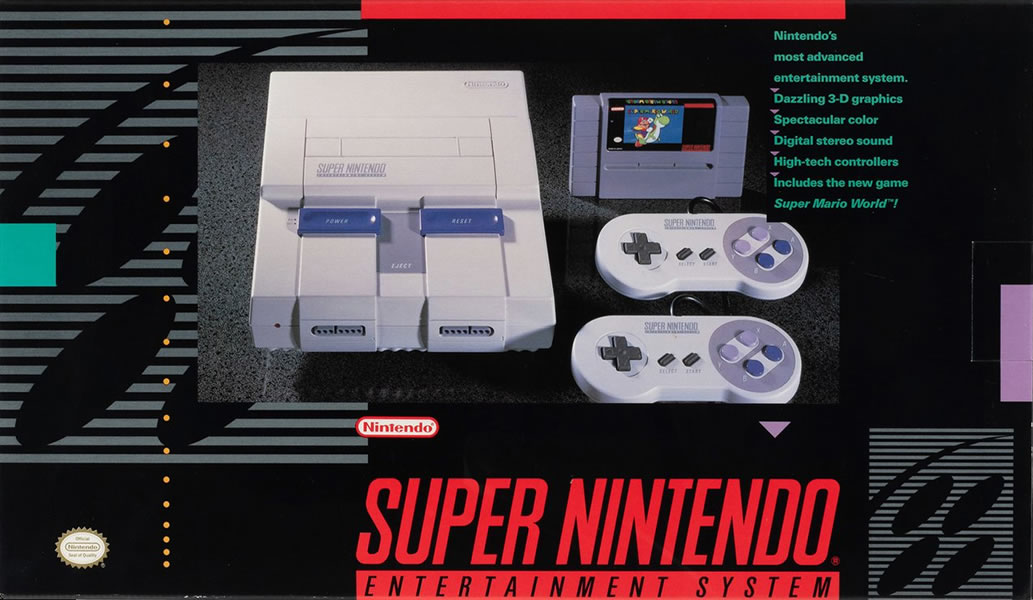
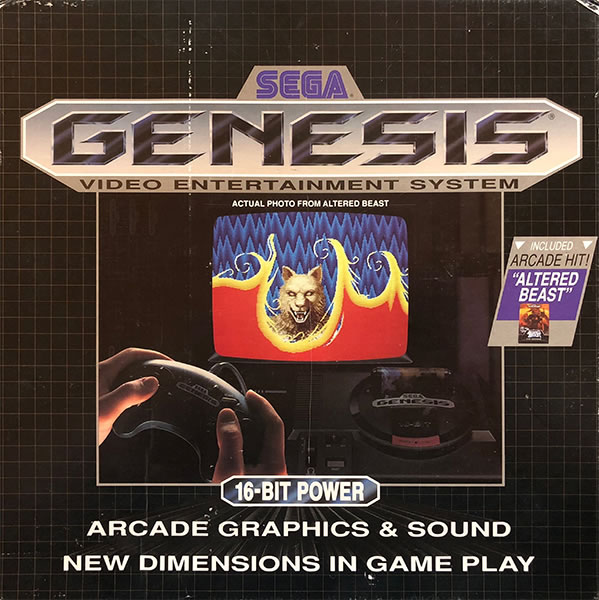

Sega Game Gear#10Only a year after Sega brought their first portable to market, there were already signs that the Game Gear was doomed. Electronic Gaming Monthly wasn't exactly blown away by the little 8-bitter in 1990, giving it a middle-of-the-pack 5.5 out of 10, so it's a shame to see things fall apart so quickly. The main culprit was a dismal software lineup that included disappointing versions of Ninja Gaiden, G-LOC and Revenge of Drancon, which turned out to just be Wonder Boy with a different name. Just about the only Game Gear title EGM approved of was Land of Illusion Starring Mickey Mouse, though even that was a step down from 16-bit Mickey. Yeah, this truly was a rough year for Game Gear adopters.
When it came to Electronic Gaming Monthly, Steve was the first to start whacking away at this particular pinata: “The Game Gear is a step backwards for anyone who's sampled 16-bitters. The machine has simple games and the graphics that just don't compare to the lower price of the Lynx.” Martin agreed, noting that the “only games that I gave any attention to were Ninja Gaiden and Shinobi. Other than those two, there just aren't enough games for me.” Ed gave it a slightly higher score, but was still just as doom and gloom: “The Game Gear is in the same boat as the Master System – there just isn't enough software support. The Game Gear needs help – quick.” With all eyes focused on the 16-bit race, it's easy to see why the Game Gear is EGM's lowest-rated system with an average score of 3.5 out of 10.

Nintendo Game Boy#9If you watched our 1990 episode, then you may remember that Electronic Gaming Monthly hated the Game Boy. They said it was painful to play and only had a couple of good games, which ultimately led to it being the worst reviewed console of the year. Good news everybody, Nintendo's black and white portable is no longer at the very bottom, but don't take that to mean they turned a new leaf on the Game Boy. They still hate the handheld, this year even more than last.
Let's start with the good news, Martin gave the Game Boy a 5 out of 10 and starts his review by saying: “The Good old lack and white games never played better. Lots of cool games are the only thing saving this blurry, dark, overpriced portable.” Sushi-X still hated the system, practically shouting at Nintendo to “give me vibrant color and smooth sounds.” Believe it or not, Steve had a theory: “The Game Boy is suffering from the same problem that is plaguing the Nintendo. While it can play good games, the ratio between winners and losers is just too low.” Game Boy fans will be happy to see that it's not the lowest-ranked system on the list, but with an average score of 4 out of 10, that's not saying much.

Sega Master System#8With Sega and Nintendo locked in a battle for 16-bit supremacy, I think it's safe to say that the Master System, much like the Game Gear, was left to fend for itself. The good news is that EGM liked every Master System game they reviewed in 1991. The bad news? They only reviewed two games -- Ghouls 'N Ghosts and Land of Illusion. This was a year before Sega officially discontinued the system in the United States, and, based on the reviews, it's clear that the Master System was living on borrowed time.
That said, the EGM reviews could have been a lot worse. After all, three of the five editors gave the system a middle-of-the-road 5 out of 10. Martin argued that “there were only a few games that I really like for this system. Newer titles like Sonic and Ghouls are good, but with Genesis prices so low, why settle for toned down versions?” Sushi-X agreed, asking a very similar question: “Why settle for the chopped up 8-bit versions of the snappiest, coolest and best titles around?” Ed gave the system the lowest score and practically begged Sega, “if you're going to keep the Master System alive, then support it with games.” With an average score of 4.75 out of 10, EGM was ready to say goodbye to this long-in-the-tooth 8-bitter.

Atari Lynx#7Like the victim of a shotgun wedding, Electronic Gaming Monthly spent most of 1990 trying to make the marriage to handheld gaming work. However, now in 1991, I think it's fair to say that EGM wants a divorce. Without fail, we've seen every portable system lose ground in 1991, with all but one taking up space in the bottom half of the list. The Lynx especially had a mixed year. While it started the year with a number of duds like Robo Squash, Pac-Land and Zarlor Mercenary, the system did rally with genuine heavy hitters, including Turbo Sub, Warbirds, STUN Runner and a port of the Ninja Gaiden arcade game.
Despite a string of great games towards of the end of 1991, EGM was largely pessimistic about the system's chances. Martin notes that “The Lynx has shaped up a bit. There are more games on the way, the only problem is that most of the new games aren't any fun to play. Needs Japanese designers.” Ed also had a demand, but it didn't have anything to do with Japan: “The future looks good, but Atari is unpredictable. Needs a TV turner to compete.” Steve wasn't as concerned about watching Home Improvement on the go, concluding that the Lynx has “some nice looks, cool features and finally more games, making it a much more viable unit. The original stuff isn't blue-ribbon quality, but the conversions are.” It's one step forward, two steps back for the Lynx, which averaged a score of 5.25 out of 10.

Nintendo Entertainment System#6If the Nintendo Entertainment System was supposed to be in its sunset years, nobody told Nintendo. It's easy to understand why the editors at Electronic Gaming Monthly were miffed by the Game Gear and Master System when they only reviewed six games between them, but the NES was still home to a lot of great games in 1991. In fact, they had the most games. EGM managed to review 52 different NES games in 1991, which makes up 32% of the total of reviews that year. It was the year that brought us Battletoads, Ninja Gaiden III, Kabuki Quantum Fighter and a couple dozen other games with ninjas in them. So, with such a strong lineup, why is the NES so low on this list?
Let's go ahead and turn to Ed for the answer to that question: “The old workhorse is about ready to be put out to pasture. With so many licensees abandoning it for the new 16-bit Super NES, I give it one more year of good life.” You can almost hear Sushi-X coming to grips with mortality as he writes, “slowly, but surely, the old 8-bit king is being overtaken by the new 16-bit generation.” And then there's Martin, who complained that the system was in critical condition. “While there are a number of great titles available, most of the newer carts just don't measure up. It was fun while it lasted.” Look on the bright side, six years is a great lifecycle for any console, and Nintendo didn't truly pull the plug until 1995, four years after these reviews were written. The 8-bit NES averaged a so-so 5.5 out of 10.

SNK Neo Geo#5Fun fact: 28 games were released on the Neo Geo AES console in 1991 ... and Electronic Gaming Monthly reviewed two of them. That's not even ten percent. With so few reviews, one might wonder why they even bothered reviewing the console, since they apparently didn't put much time into it. Perhaps that's why a lot of the reviews from 1991 sound like reruns of the reviews from 1990.
Steve gave the system the highest score, but immediately highlighted the problem: “The Neo Geo is a blast for anyone with a deep pocketbook. The games are arcade all the way, with hyper graphics veiled over common themes. Still, a nice piece of tech.” Sushi-X was not impressed: “Too much money for not enough fun. I'd rather try to find a Jamma board for sale than shell out big bucks for a machine that barks more than it bites.” When it came to Martin, he used SNK's slogan against them: “Bigger, Badder, More Money. The games are looking good, with more emphasis on game play as well as graphics and sound. The price is still a bit scary for me.” As it was for most people, Martin. With games costing hundreds of dollars, this system was simply out of reach for most consumers, which is why the Neo Geo scored an average of 6 out of 10.

NEC TurboGrafx-16#4If you want to know about the ripple effect felt when the Super NES collided with the Genesis, then look no further than this fact: Only one system manage to improve their review score between 1990 and 1991, with every other system losing ground. You certainly see that with the TurboGrafx-16, which dropped nearly a full point and was starting to look like the third-wheel in Sega and Nintendo's one-on-one fight. There were a few bigger titles reviewed in 1991, such as Bonk's Revenge, Wanderers from Ys and not one, but two Valis games, but it wasn't enough to draw our attention from the headline act.
Giving it a 6 out of 10, Martin sums it up perfectly: “Despite the lower price tag, Turbo still seems to lack the excitement that the competing systems have.” Ed was the kindest to the TurboGrafx, giving it a 7, but still concluded that “the new low price is a good start, but we need to see more revolutionary software like Sherlock.” Sushi-X didn't specifically ask for more full-motion video games, but did make the argument that the Turbo-CD was an important add-on: “By far the only system that requires a CD-ROM player in order to even compete with the Genesis and Super NES, the Turbo needs a shot in the arm to stay in the game.” That shot in the arm was coming, but would it be too late? Find out next episode. But for now, EGM gave the TurboGrafx-16 an average score of 6.25 out of 10.

NEC TurboExpress#3In a cruel twist of fate, the TurboExpress was benefiting more from the avalanche of new games than the actual TurboGrafx-16. While the home console looked like an outsider in the 16-bit war, the Express was the king of handhelds in 1991. It had the best games, it had the best technology and it had the best accessories. If any portable system was going to warm EGM's cold, dead heart, the TurboExpress was the best bet.
Steve does an excellent job of not only talking the system up, but also describing its biggest weakness: “Without a doubt, the best portable, but only Neo Geo owners will have one. Seriously, the high cost is well worth it, with a crystal-clear picture and a decent library of softs.” Sushi-X also gave the game a 7 and complained about the high price tag, but he did have one prediction: “The TurboGrafx cards belong on the small screen and could possibly replace its parent system. Ed agreed that it's “Easily the best of the portables and actually better than then Turbo itself,” however, he concluded that it “needs more games designed for the TurboExpress.” Exclusive TurboExpress games? How would that even work? No need to figure that out now, because EGM gave this high-priced handheld a score of 6.75 out of 10, which is somehow good enough to be the number 3 system of 1991.

Super Nintendo Entertainment System#2And now it's time for the moment we've all been waiting for – the official start of the 16-bit system wars. While it's fun to remind ourselves just how much EGM hated handhelds, admit it, the Super NES vs. Genesis showdown is the real reason you're here. As you can see, the Super NES ended up in second place, and what is sure to be the most controversial score of the episode, it wasn't even close. The word I would use to describe the EGM critics is “disappointed.” It's not that they didn't like the machine, but rather that they were disappointed with the first batch of games.
What's interesting is how everybody was quick to point fingers. Ed blamed the console: “Nintendo could have done a lot better in designing their new Super NES. Some games are great, ut many are hampered with massive flickers and slowdown.” Calling it a “slow machine with a great music chip,” Martin praised the scaling and rotation effects that came with Mode 7. Sushi-X was by far the most disappointed, giving it a 7 and going as far as to make another dubious prediction: “Unless the programmers of this 16-bit giant can solve the horrible problem of slowdown and flicker, this system will die early, with the Genesis taking all the glory.” Yeah, 0 for 2 there, Sush. With an average score of 7.75 out of 10, the Super NES will have to settle for second place in this episode. But let me remind you, the system war is far from over.

Sega Genesis#1It's okay, Nintendo fans, you can admit it: 1991 was an amazing year for the Sega Genesis. This was the year when everything clicked. Everybody fell in love with Sonic the Hedgehog, Streets of Rage topped Final Fight, Gaiares became the new shoot ‘em up king, and let's not forget about Batman, Shadow Dancer, ToeJam & Earl and, of course, Phantasy Star III. 1991 was also the year when the Genesis solidified its spot as the go-to console for sports simulators. This was a stacked year for a company that was just waiting to break into the mainstream. With the possible exception of the terrible Dick Tracy game, this was a perfect year for Sega, and proved that Nintendo had to do more than release a Super Mario sequel to compete.
For the first time this episode, the editors at EGM actually sound excited about a system. After being underwhelmed by the Super NES, Martin couldn't wait to gush over the Genesis: “The best games, the most games and the best deal for a 16-bit system. With loads of hot titles and the Mega CD due out next year, it's obvious Genesis is a SNES killer in '92.” Sushi-X echoed those thoughts, saying that it's certainly the leader of the pack and has a lot to gloat over: “The Super NES can't compare (yet) to the high-powered titles Sega is pumping out left and right.” For as excited as Ed was about 1991, he seems even more enthusiastic about the future. “Sega is going head-to-head with the Super NES and coming out ahead, even without all of the new special features. If you think the Genesis is hot now, wait till next year!” Like I said, the system war is far from over, and I have a hunch that the Super NES will score some big wins in the near future. But with an average score of 9 out of 10, 1991 was clearly the year of the Genesis.
HOME |
CONTACT |
NOW HIRING |
WHAT IS DEFUNCT GAMES? |
NINTENDO SWITCH ONLINE |
RETRO-BIT PUBLISHING
Retro-Bit |
Switch Planet |
The Halcyon Show |
Same Name, Different Game |
Dragnix |
Press the Buttons
Game Zone Online | Hardcore Gamer | The Dreamcast Junkyard | Video Game Blogger
Dr Strife | Games For Lunch | Mondo Cool Cast | Boxed Pixels | Sega CD Universe | Gaming Trend
Game Zone Online | Hardcore Gamer | The Dreamcast Junkyard | Video Game Blogger
Dr Strife | Games For Lunch | Mondo Cool Cast | Boxed Pixels | Sega CD Universe | Gaming Trend
Copyright © 2001-2025 Defunct Games
All rights reserved. All trademarks are properties of their respective owners.
All rights reserved. All trademarks are properties of their respective owners.













